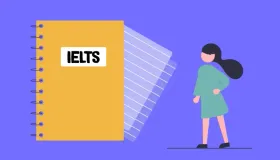The Sun A Mixed Blessing Reading Answer Passage
The Sun A Mixed Blessing Reading Answer Passage
Paragraph A. People in Western countries have very mixed feelings about the sun. On the one hand, it evokes memories of beaches, summer holidays and playful times. Children's books often personify the sun as a smiling, happy typically contrasted with angry, moody rain clouds. The sun has such positive connotations that the descriptor sunny' refers not only to a state of weather but also to 'cheery, cheerful, or joyous' moods and dispositions amongst humans. On the other hand, many people fear the sun because of its association with cosmetic degeneration, which can cause people to look much older than they are. Even more seriously, many people see the sun as a killer. This is because excessive sun exposure can lead to skin cancer, which has a very high mortality rate. So, is the sun our friend or a foe? The answers are complex and contradictory.
Paragraph B. Let's start with the worst news about the sun. It is a carcinogen. As the National Toxicology Program Report on Carcinogens from the Department of Health and Human Services reports, broad-spectrum UV radiation and solar radiation (what is known as 'sun rays') are thought to contribute to most of the estimated 1.5 million skin cancers diagnosed in the United States each year. This gives the sun the unfavourable distinction of being the leading carcinogen in the United States ahead of genetic mutations, bad diets, cigarettes, alcohol, chemical exposure and other lifestyle factors. Of these diagnoses, 8,000 sufferers will perish from the condition. The primary cause of this mortality is metastatic melanoma- moles that become cancerous and then spread mutated cells into the lymph nodes and eventually through the rest of the body.
Paragraph C. Even if you are lucky enough to avoid skin cancer, the sun can still have damaging effects on your skin. This is known as premature ageing, so-called because sun damage mimics the skin's natural ageing process but does so at a much earlier age. The sun causes premature ageing by breaking down and mutating collagen fibrous, glue-like substance that supports and connects tissue and is responsible for the firmness, suppleness, elasticity and overall appearance of the skin. Skin's collagen production slows and eventually stops due to ageing anyway, but sun exposure accelerates this process. It also mutates collagen cells, producing visible abnormalities on the skin. The slowing collagen production appears as wrinkles, sagging and fine lines, while the mutated cells can take the form of a leathery skin texture, facial ruddiness and blemishes known as liver spots. Together these can dissolve signs of youth and vitality from a person's looks - an image that contrasts starkly with the smooth, tanned and youthful-looking models we often associate with summer!
Paragraph D. The sun does have a lot of positive things to offer humans, however. Firstly, it staves off Seasonal Affective Disorder (SAD), an appropriate acronym for a mood disorder caused by insufficient exposure to light - as such, it is typically associated with winters and is sometimes called 'winter blues' or 'winter depression'. SAD, once treated with scepticism by health experts but now widely acknowledged to be a legitimate condition, can create several distressing problems. Sufferers may oversleep and find it difficult to be roused in the morning, crave 'comfort foods' high in carbohydrates, lack energy, find it difficult to concentrate and may withdraw from social exposure. Together, these symptoms can lead to depression, pessimistic feelings of hopelessness and an inability to find pleasurable activities. Researchers are not yet sure of the exact physical mechanism that causes SAD, but they do know that exposure to bright life is an effective remedy. The sun has a palliative effect here.
Paragraph E. In other ways, the health-improving effects of the sun can be even more powerful. These effects typically relate to Vitamin D, of which the sun is a great source for two reasons. Firstly, it is completely free, and secondly, our bodies have natural mechanisms that prevent an overdose of internally- generated Vitamin D from the sun. Although this vitamin can be sourced from milk, cod liver oil and supplements, solar radiation is still the primary source for most humans. Its preventative role is important: Vitamin D seems to protect against prostate, breast, colon, kidney and ovarian cancers, benefit bone health, as well as reduce overall mortality and the occurrence of cardiovascular events- mortality from strokes and heart attacks is up to 40% higher in some countries during winter months, a connection linked to lack of sun exposure. Skin cancer rates rise with proximity to the equator amongst light-skinned people, but the prognosis of most other cancers is exactly the opposite. Indeed, the overall benefits of sun exposure outweigh the risks when it comes to cancer, even though the sun is a well-documented carcinogen.
Paragraph F. Ultimately, moderation and protection may be the key when it comes to sun exposure. This is true of other carcinogens such as alcohol, as studies suggest that binge drinkers and teetotallers experience higher levels of health problems than people who drink moderate amounts of alcohol on social occasions. Healthy access to the sun involves wearing broad-spectrum sunscreen before every exposure (even in winter) and not staying in the sun any longer than is necessary, which is about five minutes for adequate Vitamin D exposure. With these simple steps, the sun once again becomes A fined and not our foe.
Let’s explore the questions and answers of The Sun a Mixed Blessing reading answer passage.
The Sun A Mixed Blessing Reading Answers with Sample Questions
Have you read the passage? Now, take the test and find The Sun A Mixed Blessing Reading answers! Try to answer these questions by yourself before you sneak a peek at the answers given below.
Check Out Top 45+ IELTS Reading Practice Test Questions with Answers
Below are some top 45+ free IELTS Reading Practice test online questions with detailed answers to enhance your IELTS preparation online. We have provided sample passages for each test type for your reference.
- What Is Exploration Reading Answers
- Effects Of Noise Reading Answers
- The Discovery Of Baby Mammoth Reading Answers
- The Dead Sea Scrolls Reading Answers
- The Ring-Tailed Lemur Reading Answers
- Why We Need To Protect Polar Bears Reading Answers
- Nutmeg A Valuable Spice Reading Answers
- What Is Meaning Reading Answers
- Cutty Sark Reading Answers
- The Step Pyramid Of Djoser Reading Answers
- South Pole Adventurer Reading Answers
- The Future Of Work Reading Answers
- Ambergris Reading Answers
- Trees In Trouble Reading Answers
- Could Urban Engineers Learn From Dance Reading Answers
- The Flavour Of Pleasure Reading Answers
- The Value Of A College Degree Reading Answers
- Why You Should Delegate Tasks To Team Members Reading Answers
- Corporate Social Responsibility Reading Answers
- Forest Management In Pennsylvania USA Reading Answers
- Making Time For Science Reading Answers
- The Power Of Play Reading Answers
- Coastal Archaeology Of Britain Reading Answers
- How The Other Half Thinks Reading Answers
- Changes In Reading Habits Reading Answers
- The Forgotten Forest Reading Answers
- When Conversations Flow Reading Answers
- Attitudes Towards Artificial Intelligence Reading Answers
- The Ingenuity Gap Reading Answers
- A Bar At The Folies Reading Answers
- Booking A Wessex Cottages Holiday Reading Answers
- Sunset Tours Reading Answers
- Bird Migration Reading Answers
- Clutter Bugs Beware Reading Answers
- The Hidden Histories Of Exploration Exhibition Reading Answers
- Calisthenics Reading Answers
- Having A Lovely Time Reading Answers
- The Return Of Huarango Reading Answers
- Summer Activities At London Kew Gardens Reading Answers
- Computer Games For Preschoolers Reading Answers
- Extinct The Giant Deer Reading Answers
- Micro Enterprise Credit For Street Youth Reading Answers
- Plain English Campaign Reading Answers
- Glow Worms Reading Answers
- How To Prepare For An Interview Reading Answers
- Quiet Roads Ahead Reading Answers
- Sculpture Reading Answers
- Cornwall Reading Answers
- Latchkey Children Reading Answers
- Healthy Intentions Reading Answers
- Makete Integrated Rural Transport Project Reading Answers
- Allergy Testing Reading Answers
- Life Casting And Art Reading Answers
- Metropolis Movies Reading Answers
- The Bridge That Swayed Reading Answers
- The Discovery Of Uranus Reading Answers
- The Extraordinary Watkin Tench Reading Answers
- The Secret Schizoid Reading Answers







